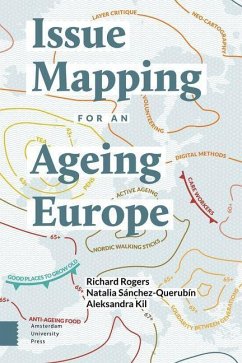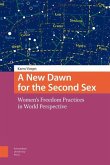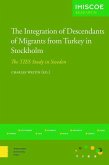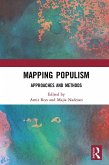Richard Rogers, Natalia Sánchez-Querubín, Aleksandra Kil
Issue Mapping for an Ageing Europe (eBook, PDF)
0,00 €
0,00 €
inkl. MwSt.
Sofort per Download lieferbar

0 °P sammeln
0,00 €
Als Download kaufen

0,00 €
inkl. MwSt.
Sofort per Download lieferbar

0 °P sammeln
Jetzt verschenken
Alle Infos zum eBook verschenken
0,00 €
inkl. MwSt.
Sofort per Download lieferbar
Alle Infos zum eBook verschenken

0 °P sammeln
Richard Rogers, Natalia Sánchez-Querubín, Aleksandra Kil
Issue Mapping for an Ageing Europe (eBook, PDF)
- Format: PDF
- Merkliste
- Auf die Merkliste
- Bewerten Bewerten
- Teilen
- Produkt teilen
- Produkterinnerung
- Produkterinnerung

Bitte loggen Sie sich zunächst in Ihr Kundenkonto ein oder registrieren Sie sich bei
bücher.de, um das eBook-Abo tolino select nutzen zu können.
Hier können Sie sich einloggen
Hier können Sie sich einloggen
Sie sind bereits eingeloggt. Klicken Sie auf 2. tolino select Abo, um fortzufahren.

Bitte loggen Sie sich zunächst in Ihr Kundenkonto ein oder registrieren Sie sich bei bücher.de, um das eBook-Abo tolino select nutzen zu können.
By employing websites of nongovernmental organizations, search engine queries identifying cultural philosophies about aging, and more, the contributors to this volume define the agenda for aging issues throughout Europe.
- Geräte: PC
- ohne Kopierschutz
- eBook Hilfe
Andere Kunden interessierten sich auch für
![Migration from the Middle East and North Africa to Europe (eBook, PDF) Migration from the Middle East and North Africa to Europe (eBook, PDF)]() Migration from the Middle East and North Africa to Europe (eBook, PDF)0,00 €
Migration from the Middle East and North Africa to Europe (eBook, PDF)0,00 €![Irregular Migrants in Belgium and the Netherlands (eBook, PDF) Irregular Migrants in Belgium and the Netherlands (eBook, PDF)]() Masja MeeterenIrregular Migrants in Belgium and the Netherlands (eBook, PDF)0,00 €
Masja MeeterenIrregular Migrants in Belgium and the Netherlands (eBook, PDF)0,00 €![Educational Mobility of Second-generation Turks (eBook, PDF) Educational Mobility of Second-generation Turks (eBook, PDF)]() Philipp SchnellEducational Mobility of Second-generation Turks (eBook, PDF)0,00 €
Philipp SchnellEducational Mobility of Second-generation Turks (eBook, PDF)0,00 €![A New Dawn for the Second Sex (eBook, PDF) A New Dawn for the Second Sex (eBook, PDF)]() Karen VintgesA New Dawn for the Second Sex (eBook, PDF)0,00 €
Karen VintgesA New Dawn for the Second Sex (eBook, PDF)0,00 €![Players and Arenas (eBook, PDF) Players and Arenas (eBook, PDF)]() Players and Arenas (eBook, PDF)0,00 €
Players and Arenas (eBook, PDF)0,00 €![The Integration of Descendants of Migrants from Turkey in Stockholm (eBook, PDF) The Integration of Descendants of Migrants from Turkey in Stockholm (eBook, PDF)]() The Integration of Descendants of Migrants from Turkey in Stockholm (eBook, PDF)0,00 €
The Integration of Descendants of Migrants from Turkey in Stockholm (eBook, PDF)0,00 €![Mapping Populism (eBook, PDF) Mapping Populism (eBook, PDF)]() Mapping Populism (eBook, PDF)41,95 €
Mapping Populism (eBook, PDF)41,95 €-
-
-
By employing websites of nongovernmental organizations, search engine queries identifying cultural philosophies about aging, and more, the contributors to this volume define the agenda for aging issues throughout Europe.
Dieser Download kann aus rechtlichen Gründen nur mit Rechnungsadresse in A, B, BG, CY, CZ, D, DK, EW, E, FIN, F, GR, HR, H, IRL, I, LT, L, LR, M, NL, PL, P, R, S, SLO, SK ausgeliefert werden.
Produktdetails
- Produktdetails
- Verlag: Amsterdam University Press
- Seitenzahl: 148
- Erscheinungstermin: 26. Februar 2015
- Englisch
- ISBN-13: 9789048524457
- Artikelnr.: 42894057
- Verlag: Amsterdam University Press
- Seitenzahl: 148
- Erscheinungstermin: 26. Februar 2015
- Englisch
- ISBN-13: 9789048524457
- Artikelnr.: 42894057
- Herstellerkennzeichnung Die Herstellerinformationen sind derzeit nicht verfügbar.
Rogers Richard :
Richard Rogers, PhD, is Professor of New Media and Digital Culture, Media Studies, University of Amsterdam, and Director of the Digital Methods Initiative. He is author of Information Politics on the Web and Digital Methods (both MIT Press) and Doing Digital Methods (SAGE).Sánchez-Querubín Natalia :
Natalia Sánchez Querubín is PhD candidate in New Media at the University of Amsterdam.Kil Aleksandra :
Aleksandra Kil is PhD candidate in Cultural Studies and member of the Soundscape Research Studio as well as the Laboratory for the Contemporary Humanities at the University of Wroclaw, Poland.
Richard Rogers, PhD, is Professor of New Media and Digital Culture, Media Studies, University of Amsterdam, and Director of the Digital Methods Initiative. He is author of Information Politics on the Web and Digital Methods (both MIT Press) and Doing Digital Methods (SAGE).Sánchez-Querubín Natalia :
Natalia Sánchez Querubín is PhD candidate in New Media at the University of Amsterdam.Kil Aleksandra :
Aleksandra Kil is PhD candidate in Cultural Studies and member of the Soundscape Research Studio as well as the Laboratory for the Contemporary Humanities at the University of Wroclaw, Poland.
Acknowledgements. 1 Introduction: Issue mapping, ageing, and digital
methods. 1.1 Issue mapping. 1.2 The ageing issue and its place in Europe.
1.3 Mapping theory: Social cartography, risk cartography, and critical
neo-cartography. 1.4 Digital methods for issue mapping: New formats, data,
and traceability. 1.5 Digital methods and the visualizations employed in
the mappings. 2 A social cartography of ageing. 2.1 Ageing as a social
issue. 2.2 How to trace associations: Operationalizing social cartography
using digital methods. 2.3 Ageing as a European issue? The EU initiatives
and local agendas. 2.4 Polish ageing NGOs, issue formats, and the local
variation on Europeanization. 2.5 Which issue formats lend themselves to
domestic debates on pension reform? The cases of U.K. and Poland. 2.6 Tea
and pens as ?cosmos-objects? in the British public sector pension reform
debate. 2.7 Staging the pension reform controversy in Poland. Which formats
could empower action? 3 A risk cartography of ageing. 3.1 AGE U.K.?s
hyperlinking behaviour. 3.2 Care worker migration as ageing issue (in the
U.K. and beyond) and the quest for the cosmopolitan moment. 3.3 Migration
of healthcare and social care workers and the impacts on victim states. 3.4
Care worker migration to the U.K.: A risk cartography. 4 A critical
cartography of ageing. 4.1 Critical cartography and mapmaking. 4.2
Practicing critical mapmaking. 4.3 Neo-cartography and digital methods: The
mash-up and the layer. 4.4 Issue layer I: The Polish care worker migration
layer. 4.5 Issue layer II: Ageing issue centres and peripheries - NGOs,
events, and sources of authority. 4.6 Issue layer III: Cross-cultural
analysis of ageing issues. 4.7 Ageing resources map. 4.8 Ageing well
according to European local Google domains: Ageing tips and an anti-ageing
shopping list. 5 Conclusions: Mapping for an ageing Europe. 5.1 Producing
social cartographies of ageing: The EUropeanization of ageing? 5.2
Producing risk cartographies of ageing: Winner and loser places. 5.3
Producing critical neo-cartographies of ageing: Issue layers and resource
maps. 6 Glossary of tools used. 7. References. 8. Notes.
methods. 1.1 Issue mapping. 1.2 The ageing issue and its place in Europe.
1.3 Mapping theory: Social cartography, risk cartography, and critical
neo-cartography. 1.4 Digital methods for issue mapping: New formats, data,
and traceability. 1.5 Digital methods and the visualizations employed in
the mappings. 2 A social cartography of ageing. 2.1 Ageing as a social
issue. 2.2 How to trace associations: Operationalizing social cartography
using digital methods. 2.3 Ageing as a European issue? The EU initiatives
and local agendas. 2.4 Polish ageing NGOs, issue formats, and the local
variation on Europeanization. 2.5 Which issue formats lend themselves to
domestic debates on pension reform? The cases of U.K. and Poland. 2.6 Tea
and pens as ?cosmos-objects? in the British public sector pension reform
debate. 2.7 Staging the pension reform controversy in Poland. Which formats
could empower action? 3 A risk cartography of ageing. 3.1 AGE U.K.?s
hyperlinking behaviour. 3.2 Care worker migration as ageing issue (in the
U.K. and beyond) and the quest for the cosmopolitan moment. 3.3 Migration
of healthcare and social care workers and the impacts on victim states. 3.4
Care worker migration to the U.K.: A risk cartography. 4 A critical
cartography of ageing. 4.1 Critical cartography and mapmaking. 4.2
Practicing critical mapmaking. 4.3 Neo-cartography and digital methods: The
mash-up and the layer. 4.4 Issue layer I: The Polish care worker migration
layer. 4.5 Issue layer II: Ageing issue centres and peripheries - NGOs,
events, and sources of authority. 4.6 Issue layer III: Cross-cultural
analysis of ageing issues. 4.7 Ageing resources map. 4.8 Ageing well
according to European local Google domains: Ageing tips and an anti-ageing
shopping list. 5 Conclusions: Mapping for an ageing Europe. 5.1 Producing
social cartographies of ageing: The EUropeanization of ageing? 5.2
Producing risk cartographies of ageing: Winner and loser places. 5.3
Producing critical neo-cartographies of ageing: Issue layers and resource
maps. 6 Glossary of tools used. 7. References. 8. Notes.
Acknowledgements. 1 Introduction: Issue mapping, ageing, and digital
methods. 1.1 Issue mapping. 1.2 The ageing issue and its place in Europe.
1.3 Mapping theory: Social cartography, risk cartography, and critical
neo-cartography. 1.4 Digital methods for issue mapping: New formats, data,
and traceability. 1.5 Digital methods and the visualizations employed in
the mappings. 2 A social cartography of ageing. 2.1 Ageing as a social
issue. 2.2 How to trace associations: Operationalizing social cartography
using digital methods. 2.3 Ageing as a European issue? The EU initiatives
and local agendas. 2.4 Polish ageing NGOs, issue formats, and the local
variation on Europeanization. 2.5 Which issue formats lend themselves to
domestic debates on pension reform? The cases of U.K. and Poland. 2.6 Tea
and pens as ?cosmos-objects? in the British public sector pension reform
debate. 2.7 Staging the pension reform controversy in Poland. Which formats
could empower action? 3 A risk cartography of ageing. 3.1 AGE U.K.?s
hyperlinking behaviour. 3.2 Care worker migration as ageing issue (in the
U.K. and beyond) and the quest for the cosmopolitan moment. 3.3 Migration
of healthcare and social care workers and the impacts on victim states. 3.4
Care worker migration to the U.K.: A risk cartography. 4 A critical
cartography of ageing. 4.1 Critical cartography and mapmaking. 4.2
Practicing critical mapmaking. 4.3 Neo-cartography and digital methods: The
mash-up and the layer. 4.4 Issue layer I: The Polish care worker migration
layer. 4.5 Issue layer II: Ageing issue centres and peripheries - NGOs,
events, and sources of authority. 4.6 Issue layer III: Cross-cultural
analysis of ageing issues. 4.7 Ageing resources map. 4.8 Ageing well
according to European local Google domains: Ageing tips and an anti-ageing
shopping list. 5 Conclusions: Mapping for an ageing Europe. 5.1 Producing
social cartographies of ageing: The EUropeanization of ageing? 5.2
Producing risk cartographies of ageing: Winner and loser places. 5.3
Producing critical neo-cartographies of ageing: Issue layers and resource
maps. 6 Glossary of tools used. 7. References. 8. Notes.
methods. 1.1 Issue mapping. 1.2 The ageing issue and its place in Europe.
1.3 Mapping theory: Social cartography, risk cartography, and critical
neo-cartography. 1.4 Digital methods for issue mapping: New formats, data,
and traceability. 1.5 Digital methods and the visualizations employed in
the mappings. 2 A social cartography of ageing. 2.1 Ageing as a social
issue. 2.2 How to trace associations: Operationalizing social cartography
using digital methods. 2.3 Ageing as a European issue? The EU initiatives
and local agendas. 2.4 Polish ageing NGOs, issue formats, and the local
variation on Europeanization. 2.5 Which issue formats lend themselves to
domestic debates on pension reform? The cases of U.K. and Poland. 2.6 Tea
and pens as ?cosmos-objects? in the British public sector pension reform
debate. 2.7 Staging the pension reform controversy in Poland. Which formats
could empower action? 3 A risk cartography of ageing. 3.1 AGE U.K.?s
hyperlinking behaviour. 3.2 Care worker migration as ageing issue (in the
U.K. and beyond) and the quest for the cosmopolitan moment. 3.3 Migration
of healthcare and social care workers and the impacts on victim states. 3.4
Care worker migration to the U.K.: A risk cartography. 4 A critical
cartography of ageing. 4.1 Critical cartography and mapmaking. 4.2
Practicing critical mapmaking. 4.3 Neo-cartography and digital methods: The
mash-up and the layer. 4.4 Issue layer I: The Polish care worker migration
layer. 4.5 Issue layer II: Ageing issue centres and peripheries - NGOs,
events, and sources of authority. 4.6 Issue layer III: Cross-cultural
analysis of ageing issues. 4.7 Ageing resources map. 4.8 Ageing well
according to European local Google domains: Ageing tips and an anti-ageing
shopping list. 5 Conclusions: Mapping for an ageing Europe. 5.1 Producing
social cartographies of ageing: The EUropeanization of ageing? 5.2
Producing risk cartographies of ageing: Winner and loser places. 5.3
Producing critical neo-cartographies of ageing: Issue layers and resource
maps. 6 Glossary of tools used. 7. References. 8. Notes.







